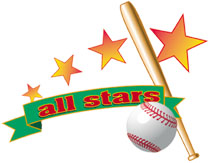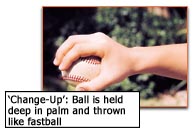News and Announcements
E-Minutes / General Meeting Minutes Of November 20, 2002
Posted by Patrick Piteo at Nov 19, 2002 4:00PM PST
( 0 Comments
)
The Meeting Was called to order at 7:20 PM. Motion to waive minutes from last meeting was made by Steve Pellegrino and seconded by Al Erdmann. The Fall League is over and ran very successful. Pat Thanked all who helped out. The Tournament Team party was well attended. Pat Thanked all who helped out. The teams honored were the boys 9-10, the girls softball 9-10 who won the New York State District 27 Little League Championship and the Big League Girls Softball who won the New York State Championship. Al reported tat the fields are now closed, and the water has been turned off. No managers are allowed to practice on the field until the 2003 begins. Jeff Catalano reported that all the equipment at the field will be brought to the clubhouse. The registration letter is completed and will be put in the mailing envelopes. Little League is requiring all leagues to perform background checks on all league personnel that come in contact with the children. These checks will be performed on the web. The 2003 league registration dates were announced: Friday: 1/24/03 - 7-10 PM, Saturday: 1/25/03 - 10 AM-4 PM, Friday: 1/31/02 - 7-10 PM,Saturday: 2/01/03 - 10 AM-4 PM. These are the only dates for registration. The league drafts will be held in February and the 2003 Opening Day will be April 5, 2003. We are trying to book the Jackie Robinson Marching Band for Opening Day. The league has bought the rights to www.rgmvm.com for 5 years. Please visit the new web site. The Long Ball Club is ongoing until Spring. Anyone interested should see Pat for further information. The cost is $275.00 for 15 weeks of 2 hrs per week instruction by Minor & Major League ballplayers. You can put $50.00 down and pay as you go. The 2003 RGMVM Little League Board Of Directors were elected and are as follows: President - Pat Piteo Vice President - Al Erdmann Treasurer - Cora Modica Information Officer/Secretary - Kathy Masi Safety Director - Joe Koebetitsch Head Player Agent - Arlene Erdmann Umpire Chief - Richie Adams Purchasing Director - Jeff Catalano Senior Player Agent - Mike Rizzo Major Player Agent - John Masi Minor Player Agent - Steve Pellegrino Rookies - Pat Shanley Instructional - Rob Hofmann Girls Softball - Mike Scotko *New Board Member position Tournament Team Agent - Tony Saegar The meeting was Closed at 8 PM.
The E-Zine Link: John Skilton's Baseball Links
Posted by Patrick Piteo at Nov 18, 2002 4:00PM PST
( 0 Comments
)
Touted as the Web's most comprehensive collection of links to baseball resources. Currently there are 9,781 unique links indexed in a multitude of categories. If you can't find what you're looking for at www.baseball-links.com, it probably doesn't exist


This may not be much of a surprise to you, since I bet everyone from your parents to your teacher to your baseball coach tells you this all the time: The way to get better at something is to practice it. A lot. But practicing things in baseball might be a little different from practicing other things, like doing your homework. For one, you get to do it outdoors. For another, with baseball, practicing just one thing and one thing only helps you remember the rest of what you need to know. Take fielding a ground ball, for example. We’ve already discussed the way to set up to field a grounder (remember how to form your “Triangle”? See photo below, with the player’s feet and hands forming the triangle), but sometimes, as you may have found out already, even when you do that, the ball has a way of getting under your glove. But not if you practice getting your glove lower than the ball. The reason keeping your glove lower than the ball as it approaches is a good thing to remember, is that there’s always going to be a natural tendency to raise your hands when it comes near. If your glove is at the same level with the ball, chances are pretty good that when you do raise your hands in that natural reflex motion, the ball’s going to keep on going underneath. Almost every time you see a big leaguer make an error on a ground ball in front of them it’s because he didn’t keep his hands low enough as the ball was bouncing toward him. Another good reason to practice something as simple as keeping your glove lower than the ball is that, when you’re really out there playing the infield, repeating it to yourself will be a great way to also remember the other things you’ve already learned. Remembering your ‘Triangle’ and everything else we’ve talked about prepares you for the ground ball as it comes, but keeping your glove lower than the ball helps make sure you catch it when it does.

Junior Baseball Magazine On-Line We’ve talked about how to throw different kinds of fastballs and both the traditional and ‘safe’ curveball grips, too. The bottom line principle for young pitchers is to stick with the fastball until you’ve mastered it to the point where you can throw it for a strike, no matter the situation. But when the time comes to develop that second pitch, I suggest that it not be a curveball, but a ‘change of pace’, instead. For many pitchers your age, the curveball can be a pretty hard thing to throw for strikes. Even harder is developing the leverage needed to actually make the ball curve. The result often is a pitch that stays up in the strike zone. And curveballs that stay up are just another way of describing an extra-base hit waiting to happen. But a change-up is an easier pitch to master since the pitching motion for a change-up is (and really needs to be) exactly the same as you use when throwing the fastball. In fact, throwing it with the same motion is one of the principals behind the pitch. Change-ups are all about deception - making the batter think that a fastball is on the way. The difference is in the grip. Every-thing else remains the same. The change-up can be thrown with a variety of grips, the ‘circle change’ being the grip of choice. All you have to do is make an ‘OK’ sign with your thumb and first finger and place the ball snugly in the palm of your hand. Make sure the ball is held farther back in the hand than with your fastball grip. The pressure on the ball is applied with the middle knuckles. Again, this is different from the fastball, where the pressure is light and done by the fingertips. Someone should be able to take the ball from your hand without much effort when you’re using the fastball grip. Not so with the change-up. Some kids like using a ‘palm ball’ grip, which simply means you encase the ball, as much as you can, with all the fingers. Just find the grip that works best for you. Another important aspect of a good change-up, meaning one that stays down in the strike zone, is the follow-through. If your first attempts at throwing the change-up result in the ball bouncing somewhere near the top of the screen, just make sure your follow-through is more complete the next time. For a change-up to be successful, it doesn’t necessarily have to result in a swing and a miss for strike three. In fact, a lot of good coaches will say that you don’t want to throw a change-up for a strike with less than two strikes in the count. More often, a good change-up gets you one of those hoppers to shortstop for an easy out. Remember, getting the batter to think the fastball is coming is what a change-up is all about! If you can master the fastball, you’ll be able to get kids out in Little League. Master a second pitch and you’ll get them out in high school. Master a third pitch (curve, slider, etc.), and maybe some day you’ll be able to throw the ball for a living. Developing a good, consistent change-up is a terrific way to extend your baseball future. Just be patient, stick to the basics, and good things will happen. See The Picture Below For The Change-Up Grip !



All Standings are now kept on the game schedule site:
http://www.allprosoftware.net/RGMVM/aplsmasterschedule.htm

